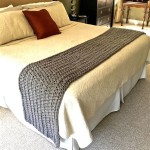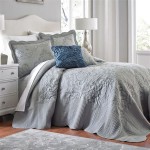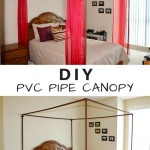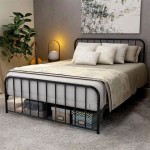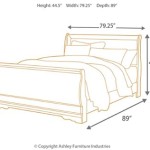DIY Queen Size Bed Frame Dimensions: A Comprehensive Guide
Building a queen-size bed frame presents a rewarding woodworking project, allowing for customization and cost savings. Accurate dimensions are crucial for a stable and functional bed frame that properly supports a standard queen-size mattress. This guide provides detailed information on standard queen bed dimensions and considerations for DIY bed frame construction.
Standard Queen Size Mattress Dimensions
A standard queen-size mattress measures 60 inches wide by 80 inches long. These dimensions are critical for planning the bed frame's internal dimensions. The frame must accommodate the mattress comfortably with a slight allowance for bedding and movement, preventing the mattress from slipping or feeling too constricted.
Planning Your Bed Frame Dimensions
When planning a DIY bed frame, the external dimensions will depend on the desired design and features. Considerations include adding a headboard, footboard, side rails, and support systems. These additions increase the overall footprint of the bed frame beyond the mattress dimensions. Careful planning and accurate measurements are essential to ensure the finished product fits the designated space.
Internal Frame Dimensions
The internal dimensions of the bed frame should match the mattress size precisely – 60 inches by 80 inches. This ensures the mattress fits snugly and prevents unwanted shifting. Accurate measurements and precise cutting of the frame components are vital for achieving these internal dimensions.
Material Considerations
Several materials are suitable for constructing a queen-size bed frame, each with its own advantages and considerations. Common choices include solid wood, plywood, and metal. Solid wood offers durability and aesthetic appeal, while plywood provides a cost-effective and stable option. Metal frames are known for their strength and minimalist design. The choice of material will influence the required tools, construction techniques, and the overall aesthetic of the bed frame.
Height Considerations
The height of the bed frame is a key factor affecting accessibility and overall bedroom aesthetics. Standard bed frame heights typically range from 12 to 18 inches from the floor to the top of the mattress. This height provides comfortable access for most individuals. Lower bed frames create a modern, minimalist look, while higher frames offer a more traditional feel. Personal preference and existing bedroom furniture should be considered when determining the desired bed frame height.
Support System
A robust support system is essential for preventing mattress sagging and ensuring longevity. Traditional methods employ a center support beam with supporting legs and cross slats. Alternatively, a platform bed design utilizes a solid platform or closely spaced slats to support the mattress directly. The chosen support system impacts the required materials and construction steps.
Headboard and Footboard Design
The headboard and footboard are optional design elements that can enhance the bed frame's aesthetic appeal and functionality. A headboard offers back support for sitting up in bed, while a footboard can prevent bedding from sliding off the foot of the bed. The dimensions and design of these elements are customizable and should be factored into the overall bed frame plan. Careful planning ensures they integrate seamlessly with the side rails and support system.
Side Rail Construction
Side rails provide essential support for the mattress and connect the headboard and footboard. They should be sturdy and securely attached to the other frame components. The width of the side rails contributes to the overall bed frame dimensions, and their height influences the ease of getting in and out of bed. Proper construction techniques, including joinery and fastening methods, ensure the side rails provide adequate support and stability.
Finishing Touches
Once the bed frame is assembled, finishing touches can enhance its appearance and durability. Sanding smooths rough edges and prepares the frame for painting or staining. Applying a protective finish seals the wood and enhances its resistance to moisture and wear. The choice of finish depends on personal preference and the desired aesthetic.
Planning for Assembly
Before beginning construction, carefully review the design plans and ensure all necessary materials and tools are readily available. A step-by-step assembly plan simplifies the construction process and minimizes errors. Consider a pre-assembly "dry run" to confirm all components fit together correctly before applying any finishes.

Chestwick Platform Bed Queen Size Frame Diy Plans

Diy Bed Frame Wood Headboard 1500 Look For 200 A Piece Of Rainbow

Simple Queen Bed Frame Diy Plans

Queen X Barn Door Farmhouse Bed Plan Her Tool Belt

Essential Platform Bed Frame Ana White

How To Build A Queen Size Bed Frame Howtospecialist Step By Diy Plans

Diy Bed Frame Wood Headboard 1500 Look For 200 A Piece Of Rainbow

Zinus Linda Wood Brown Queen Mid Century Platform Bed Frame Fpwhvp 12q The Home Depot

Floating Queen Size Platform Bed Plans Howtospecialist How To Build Step By Diy Frame

Diy West Elm Chevron Bed Free Plans
Related Posts
